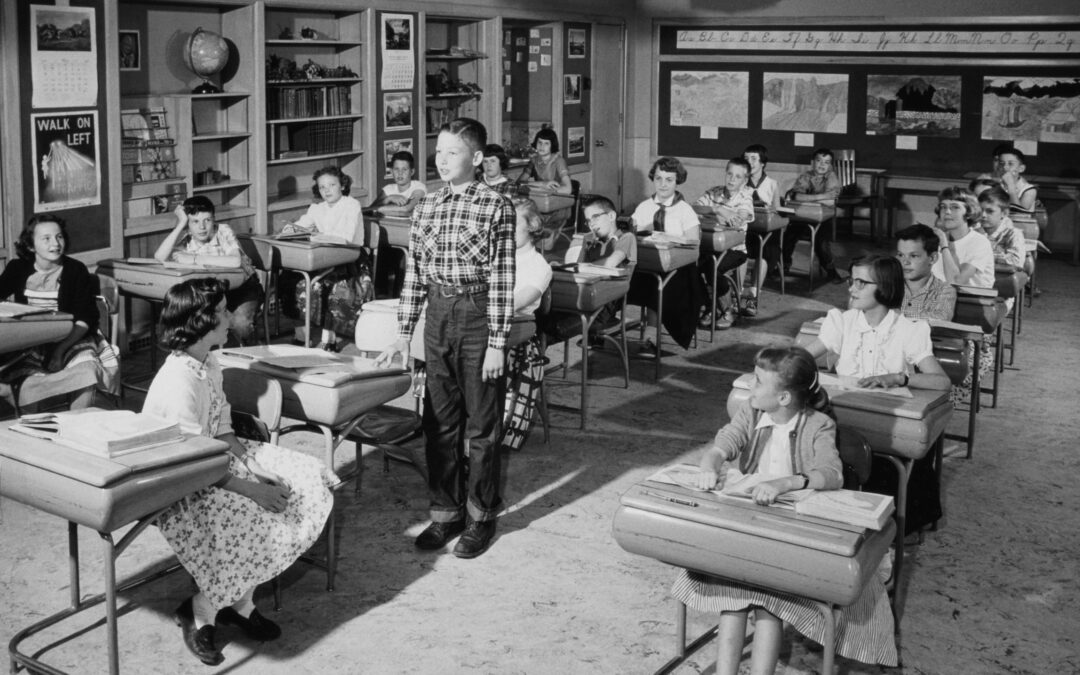Personalized learning is an educational approach that tailors instruction to meet the unique needs and progress of each individual learner. It goes beyond traditional one-size-fits-all teaching methods, utilizing technology, data and flexible instructional strategies to provide a customized learning experience.
In a personalized learning environment, students have the opportunity to set their own pace, explore topics of interest and receive targeted support based on their strengths and weaknesses. This student-centered approach aims to foster deeper understanding, engagement and motivation by acknowledging and accommodating the diverse learning styles and abilities of each student. Through adaptive content, differentiated instruction and ongoing assessment, personalized learning seeks to optimize educational outcomes and empower learners to take an active role in their own education.
Understanding Personalized Learning Through History
Comparing and contrasting the past with the present offers an informative perspective about contemporary topics. After all, society didn’t “just end up” where it is now, both literally and figuratively. In order to grasp the meaning and intention of personalized learning and pursue its promised benefits, it’s important to start with the history behind it as well.
Surprisingly, personalized learning has its roots in early American history and is a product of a centuries-long, and uniquely American, quest for an educated and informed democracy.
A Founding Father’s Vision
The following two sections are informed by John Dockterman’s research, which can be found here.
As the Revolutionary War was raging, Thomas Jefferson introduced a bill to the Virginia state legislature, calling for the formation of a public system that provided citizens with educational opportunities “without regard to wealth, birth or other accidental condition or circumstance.” In Jefferson’s eyes, education was essential to the “preservation of freedom and happiness.”
Jefferson’s perspective isn’t a surprising one as democracies need discerning and informed voters, independent and critical thinkers, and capable and equipped workers. However, this was a massive departure from the disparate and deeply inadequate education system that came before.
While the bill was ultimately rejected, it’s relevant here because it aligns the success of democracies with education and sets in motion the pursuit of a public education system.
As the nineteenth century commenced, popular opinion embraced the concept of public, universal education.
John Lancaster and The Fabled Schoolhouse
In the four walls of the fabled schoolhouse, Lancaster introduced what we would now call a competency-based model of education, known as the Lancaster System or the Monitorial System.
Under this system, students were grouped based on competency levels in reading, writing and math. To accommodate the groupings, the learning progression was mapped into sequences with students being assigned to different sequences based on ability. Because the progressions were specific to each content area, a student may be in a beginner sequence in math but a more advanced reading sequence.
The lessons were then delivered by more expert students called monitors while the teacher oversaw the entire process. Students progressed alongside their skills and would repeat sequences as needed, giving a nod to mastery-based education.
Moving Away from Personalized Learning
As the century progressed, the Lancasterian model was popularized and spread both within the United States and abroad, continuing until the end of the century. The eventual move away from this system was a byproduct of urbanization in the United States, which resulted in overcrowding in cities and, subsequently, the overcrowding of schools.
With rising student populations, the small-group model was overwhelmed and untenable for the infrastructure and capacity of most urban schools. In response to these existential forces, age grading – meaning students were grouped into classrooms based on age – became the new norm. The logic was that students of a similar age were expected to have a shared knowledge and skills, the capacity to learn at a similar pace, and a propensity to learn in like ways.
This premise of age grading gave way, as Dockterman explains, to a system of accountability built around grade-level expectations: standards and standardized tests, retention and graduation rates.
Classrooms housed neat rows of students with a teacher delivering a lecture at the front to drill in a prescribed list of knowledge and skills that would then be assessed. Under this system, student performance was reflected in a normal distribution along a bell curve, believing that student capability was fixed with inevitable pockets of high-achievers and low-performers and a majority of students clumped somewhere in the middle.
Sound familiar? That’s because it is the model of schooling that has continued through today.
Today’s Education Model
Most have probably heard this maligned to the factory model of schooling. And in a lot of ways, this is an apt metaphor – student knowledge built along an assembly line of instruction that compounds from grade to grade, or rather workstation to workstation. The challenge is that learning isn’t conducive to standardization. So rather than students graduating with equal sets of knowledge and skills, the result is quite the opposite.
That said – and here is where historical context is necessary – this approach is a result of the economic reality of the time. The sort of mass urbanization that happened under the Industrial Revolution had never before been seen in modern history. Sprawling populations challenged almost every tentacle of public services, and the results, like in education, persist today.
At the time, a standardized, age-graded approach was a tangible solution, however strenuous, to overcome the preeminent challenges spawned by mass urbanization. Moreover, the so-called factory model of schooling’s intention wasn’t necessarily to funnel people to factories. Instead, it was an effort (at its best and in the most optimistic light) to preserve the right to education for the “preservation of freedom and happiness.”
Increasing Personalized Learning Through Student-Centric Reforms
Then began an increase of student-centric reforms.
Recognizing the flaws of the factory-like system were leaders such as John Dewey, who in his 1912 book advocated for: “the growth of learners in small learning communities where they can discuss and uphold the American ideals of democracy.”
In the latter part of the 20th century, non-age-graded schools began to arise (again) in pursuit of a student-centered instructional model, recognizing the deep flaws in a standardized and assembly line-esque model.
At this time, Fred Keller introduces his Keller plan, which is based on a Personalized System of Instruction, an individualized, competency-based approach to education.
Then, in the 1970s comes Benjamin Bloom’s research on mastery learning. His study found that a mastery-based environment, compared to a conventional approach, significantly increased student performance; and when students were paired with tutors in a mastery-based, one-to-one environment, these students significantly outperformed their conventionally taught peers and their solely mastery-taught peers.
Personalized Learning in the 21st Century
Despite the advocacy, proven benefits and re-introduction of non-age-graded schools, a scalable model still does not exist.
What most distinguishes the present from the past is access to transformative technology that can redefine what personalized learning looks like and the contexts in which it can exist. Technology dissipates the need for a one-to-one (teacher-to-student) environment, and technology helps to facilitate instructional delivery and guide students through activities and projects. Does this sound like the monitorial system? Yes.
It goes further though: technology even delivers formative assessments that are often built into the learning interface and creates adaptive learning experiences that tailor to students’ skill level, so all students move toward mastery.
With technology, teachers have the opportunity to connect with students and act as facilitators of impactful learning experiences. With access to rich data, teachers are better able to strategize in their classroom planning and the support they provide students. Students are more engaged, they set goals for their learning, see their own growth and take agency in the process. With access to abundant resources, students inform how they learn and connect with their teachers in collaborative and newly imagined ways.
Examples of what this can look like include:
- This TED Talk exploring the introduction of mastery-based learning in Title I schools.
- This interview with a district CTO sharing the strategy behind their highly personalized, blended learning environment.
- This research piece investigating a city-wide personalized learning endeavor.
Personalized, mastery-based learning isn’t new, as history has shown, but technology integration in learning is.
A version of this article was originally published on Schoology Exchange.
This article was originally published in January 2020 and has since been updated for information, relevance, and completeness.

Learning.com Team
Staff Writers
Founded in 1999, Learning.com provides educators with solutions to prepare their students with critical digital skills. Our web-based curriculum for grades K-12 engages students as they learn keyboarding, online safety, applied productivity tools, computational thinking, coding and more.
Further Reading
Teaching Students to Think Like Programmers | Learning.com
Recent discussions in education emphasize the importance of teaching students to think like computer programmers. Computational thinking involves...
Defining Computational Thinking
Computational thinking is a problem-solving process that involves various techniques and thought processes borrowed from computer science. It...
Supporting Texas Students in Becoming Tech-Strong: Expert Strategies
The rapidly evolving technological landscape means students must develop robust digital skills to thrive in future careers. Texas recognizes this...




